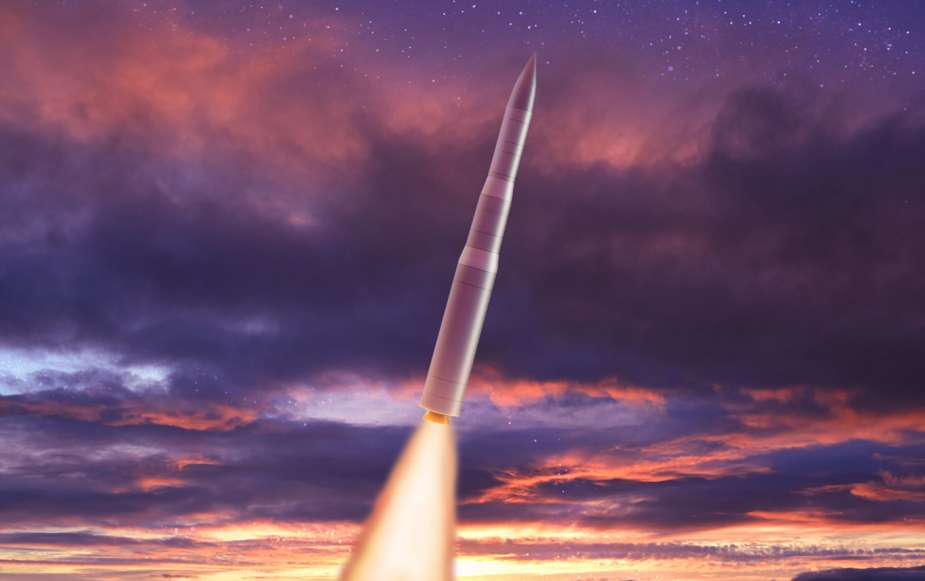Breaking news
Northrop Grumman test fires full-scale Sentinel ICBM stage-2 solid rocket motor.
Northrop Grumman completed a live, static-fire test of a Sentinel intercontinental ballistic missile (ICBM) stage-two solid rocket motor at the U.S. Air Force Arnold Engineering Development Complex. The test was conducted in a vacuum chamber simulating real-world environmental conditions the solid-rocket motor would experience during high-altitude and space flight. Test data will be analyzed to determine how motor performance matched digitally engineered model predictions, critical to maturing the design and lowering risk.
Follow Army Recognition on Google News at this link

A rendering of the new LGM-35 Sentinel ICBM flying at twilight (Illustration source: Northrop Grumman)
This test was conducted under the company’s engineering, manufacturing, and development (EMD), or design contract for Sentinel. Northrop Grumman continues to perform on this phase and is working closely with the Air Force on progressing EMD milestones. The Sentinel program is a modernization of the U.S.’s ground-based leg of the strategic triad and is designed to be viable through 2075.
Sarah Willoughby, vice president and program manager, Sentinel, Northrop Grumman: “Our successful test moves us forward for qualification testing in partnership with the Air Force. The test’s data gives us an accurate reading of our design’s performance and now informs our modeling and designs. This lowers risk and builds confidence in our approach to deliver the next-generation ICBM capability to the Air Force.”
Northrop Grumman leads a nationwide team for the engineering, manufacturing and design (EMD) contract. The team is responsible for designing the most technologically advanced portion of America’s ground-based strategic deterrent and is closely partnered with the Air Force to continue progress on EMD milestones, maturing the design while reducing risk.
Other key milestones previously performed under EMD include hypersonic wind tunnel testing and a stage-one solid rocket motor static fire.
On February 16, 2023, Northrop Grumman announced it had successfully completed a series of wind tunnel tests of the LGM-35A Sentinel intercontinental ballistic missile (ICBM). Using scaled models of the vehicle, stressed under environments from sub to hypersonic speeds, the robust test campaign validated digital modeling and simulations and proved design maturity of the missile.
“This wind tunnel campaign is an opportunity to put our digitally engineered designs to the test, under conditions that mimic a missile launch,” said Sarah Willoughby, vice president and program manager, Sentinel, Northrop Grumman. “Predictions from the modeling correlated with the testing results, giving us confidence in our model-based engineering approach. Data from these tests will inform future engineering decisions as we mature the design and continue on a path to deliver this critical capability to the Air Force.”
Wind tunnel testing is a key early step in any missile development program because it determines how a vehicle will perform during flight. A team of engineers created seven comprehensive test campaigns, each with a unique set of requirements, to measure how the missile would respond to various atmospheric, load and speed conditions. Tests simulated everything from firing the missile, to stage separation and various flight maneuvers. The team is now updating models to enable full scale predictive environments for the development of Sentinel flight hardware.
“Tests were conducted at industry and government-run facilities across the U.S. in under a year,” said Willoughby. “This is an extremely complex effort proving the value of digital engineering in helping us move to the next phase with certainty.”
Defense News January 2024






















